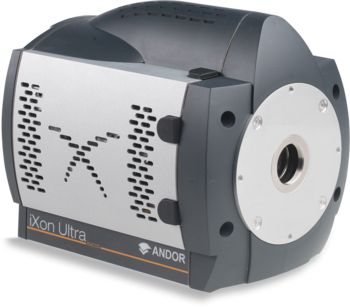Resources
 Part of the Oxford Instruments Group
Part of the Oxford Instruments Group
Expand
Collapse
 Part of the Oxford Instruments Group
Part of the Oxford Instruments Group
Challenge Background
High-resolution live-cell imaging is a demanding application for several reasons – usually fragile sample, its labelling and a big hurdle of the final stage of the process – the imaging of it. Each of these steps impacts cells’ viability so that the experimenter may be left with only a small number of viable cells that can be ultimately imaged on a microscope. This final step has its own challenges related to the phototoxicity of light and photodamage it causes to the cells and their fluorescently-labelled organelles or compartments.
Labelling cells with fluorophores allows the researchers to delineate structures within the cell and in many cases to track proteins or their complexes en route to various stopovers. Observing fine interplay of all these mechanisms requires optical resolution well below the typical Abbe-limited range of ~200 nm.
To address this, several super-resolution (SR) techniques help unravel the details of this traffic, its cargo and its pathways. However, most SR tools suffer from the fact that they require kilowatts of power per cm2 to achieve 2-3-fold (down to 100-80 nm) improvement in resolution. These levels of power are highly toxic and will limit cause unspecific, unphysiological cellular responses that may not reflect actual processes happening inside a cell.

Technology Solution
Electron Multiplying CCD (EMCCD) camera technology with SRRF-Stream is the unique detector solution for live, long (tens of minutes) time-lapse super-resolution imaging. SRRF Stream offers real-time, low-excitation power using conventional fluorophores to deliver prolonged live cell observations and accurate physiology with significantly reduced phototoxicity and photodamage.
Andor Camera Solution for live-cell super-resolution
Andor strongly recommends the iXon Ultra or iXon Life 888 Back-illuminated EMCCD Cameras for live-cell super-resolution experiments. The iXon Ultra and Life are well-established EMCCD platforms for live-cell imaging and their combination with CUDA-enabled nVidia GPUs and MicroManager creates a unique, cost-effective super-resolution solution that doesn’t require a stand-alone, typically complex, costly and phototoxic SR setup.
| Key Requirement | Live-cell super-resolution (SR): iXon Ultra or Life 888 |
| Sensitivity and Speed for real-time super-resolution | Single photon sensitivity combined with EM gain, > 90% QE and tens to hundreds of frames per second (with ROI or Crop Mode) mean that user can minimise cells’ light exposure and obtain images with good Signal-to-Noise ratios from SRRF Stream Result – longer, live-cell time-lapse imaging of physiological responses with SR output with minimised phototoxicity and photodamage |
| Conventional fluorophores | Standard fluorophores like GFP can be used in SRRF Stream imaging to produce SR images that do not need special photoswitchable dyes or associated media needed for optimal on-off blinking for localisationl. Result – use your lab’s standard vectors for fluorescent proteins. No need to re-establish and spend time optimising new labelling protocols. |
| Ease of use | Super-resolution imaging that consists of a iXon EMCCD camera with SRRF licence, nVidia CUDA GPU and MicroManager freeware software. Result – SR imaging with minimal setup time and minimal hassle |
| Simplicity of technical solution | SRRF Stream is a camera and GPU solution that can be retrofitted on your lab’s existing microscope and doesn’t require a dedicated, often highly complex and costly system. Result – from unboxing to SR imaging on your familiar microscope in under an hour |
